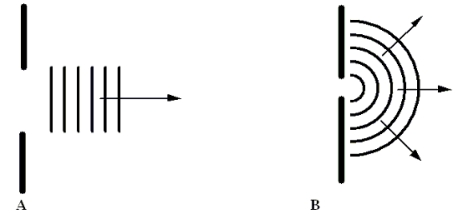Multiple Choice
Water waves approach an aperture. The resulting patterns are shown for two different cases, A and B, in which the wavelength and aperture size are varied.  Which one of the following statements concerning these cases is true?
Which one of the following statements concerning these cases is true?
A) Neither figure shows diffraction. In both cases, the wavelength is much smaller than the aperture.
B) Diffraction occurs in A, but not in B because the wavelength in A is much smaller than the aperture.
C) Diffraction occurs in B, but not in A because the wavelength in B is much smaller than the aperture.
D) Both figures show diffraction. In both cases, the wavelengths are approximately the same size as the aperture.
E) Diffraction occurs in B, but not in A because the wavelength in B is approximately the same size as the aperture.
Correct Answer:

Verified
Correct Answer:
Verified
Q21: When a tuba is played,the player makes
Q22: What is the distance to the
Q23: A guitar string has a linear density
Q25: A 4.00-m long string, clamped at both
Q29: A certain string, clamped at both ends,
Q30: A 6.00-m long string sustains a three-loop
Q30: Two loudspeakers, A and B, are separated
Q31: A cylindrical tube sustains a fundamental frequency
Q32: A string with a linear density of
Q36: A pebble is dropped in a lake;and